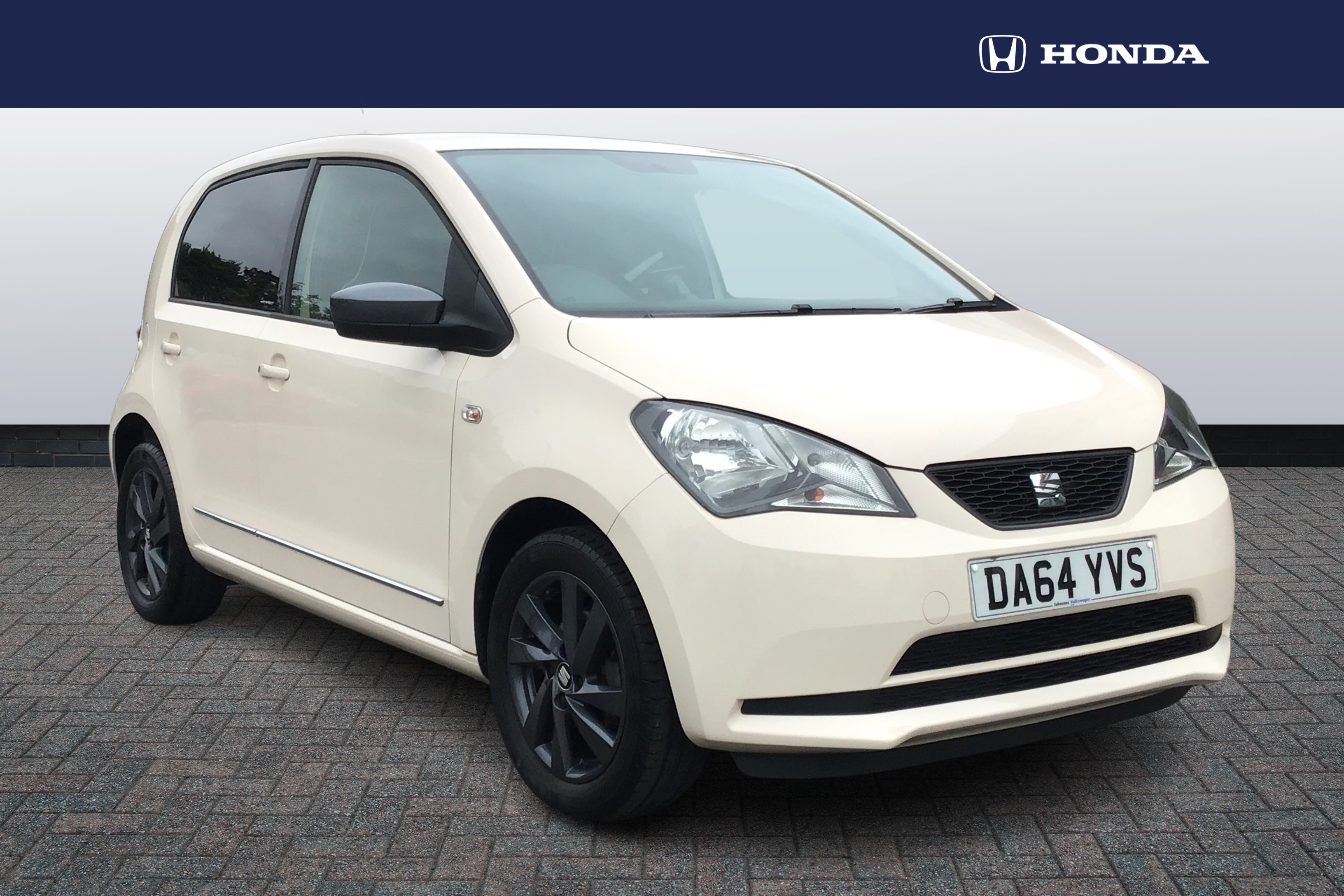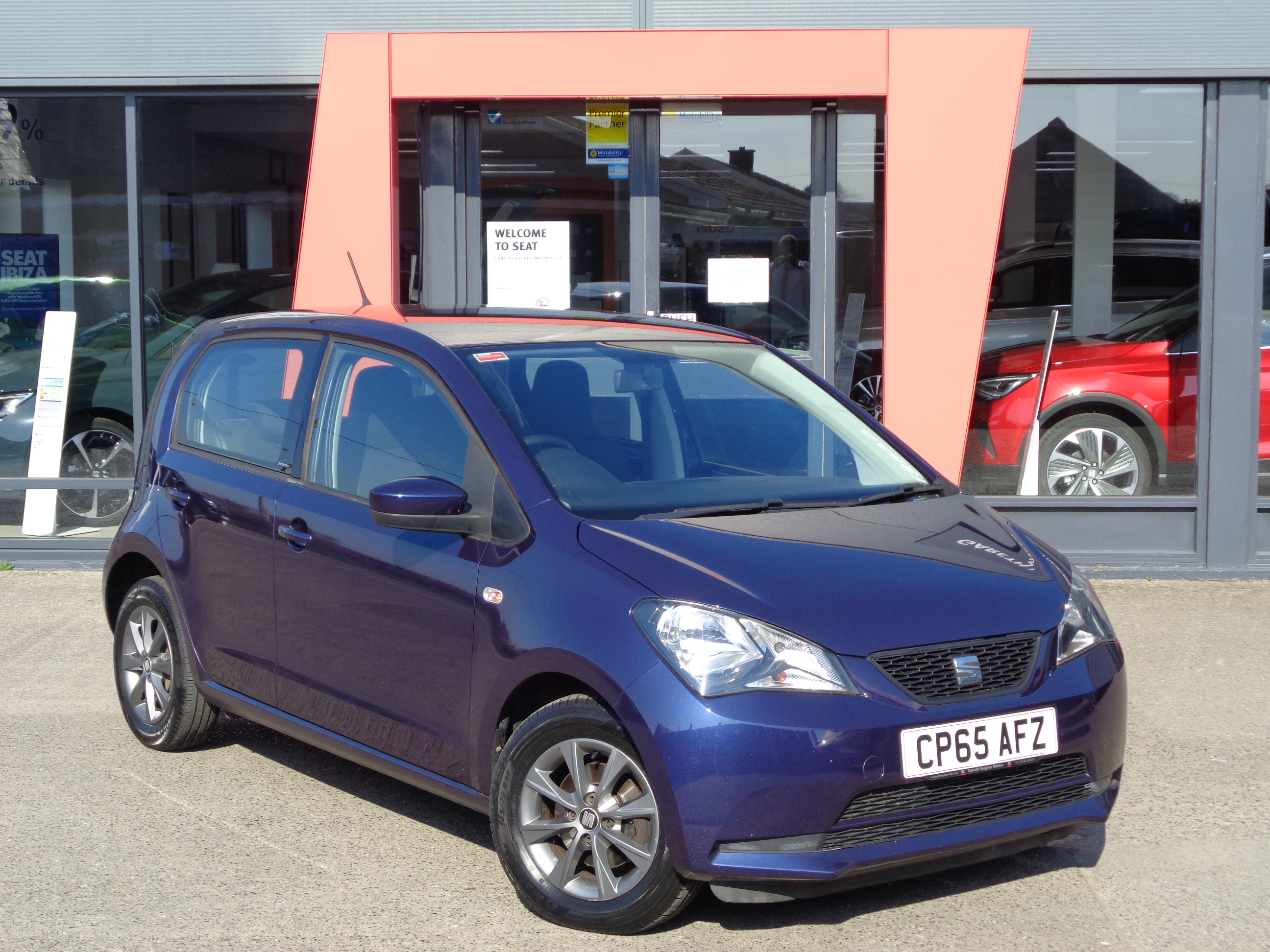
Pros
-
Smart design and solid build
-
Punchy performance yet smooth and silent
-
Removable battery box is a brilliant idea
Cons
-
Ride isn't the smoothest
-
On the expensive side for a 125cc scooter
-
Not technically a SEAT product

What is it?
Well it isn't a car, if you haven't caught on yet. We don't often venture out of the world of four wheels on here, but when the not-a-car is actually sold by a car company then we sit up and take note.
So no, the SEAT MO isn't a new version of the SEAT Mii, it's actually an electric scooter that fits into the '125cc' class. That means it can be ridden with a full car licence with L plates attached, as long as you complete a day's CBT (Compulsory Basic Training) course and receive a certificate.
And that's exactly what we did, taking to the training course and then the road with Universal Motorcycle Training on the MO. As a rider with limited experience we wanted to see how easy it was to pick up the necessary skills, and how different a battery-powered scooter felt to the usual petrol-powered ones.
Anyway, back to the bike. The SEAT MO is aimed at urban use, competing with a small number of fully electric scooters and a simply vast number of petrol alternatives. On sale now priced at £4999 (a reduced offer price) including a £1500 government zero emission grant, it uses a 12PS electric motor taking power from a 5.6kWh battery pack. The quoted range on a charge is 85 miles, with a top speed of 59mph (officially).
If you're a bike fan you might well recognise some of those stats. That's because the SEAT MO is actually a rebranded version of an electric scooter called the S01, made by another Spanish brand called Silence. SEAT's involvement doesn't extend far beyond rebadging and repainting the bike, although it's marketed and sold by them.

What's it like to ride?
As we pointed out before this rider's previous experience was limited to riding 125cc Honda Clicks around Thailand for a few weeks, and our ride on the MO was only for the day. This isn't an extensive test written by an experienced biker as a result.
However, completing the CBT course in a variety of conditions gave us a good idea of what it would be like to use and run the SEAT MO every day, taking in congested urban streets, tricky junctions and faster semi-rural roads.
First impressions are positive, with a funky and smart design and a comparable size to the usual crop of 125cc scooters you see zooming about city streets. The only visual changes over a petrol-powered model are the lack of an exhaust, the lack of any visible engine components and, of course, the lack of that two or four-stroke noise that will either annoy or excite you depending on your view.
The SEAT MO is about 30-50kg heavier than a typical 125cc scooter. Most of that is taken up by the battery pack - the big square box below the seat. This has a really neat touch: you can detach the battery box from the frame of the bike, and the box has its own handle and wheels to be pulled along. Why do this? Well, it deters thieves because the bike can't be ridden without its battery, but you'll also need to take it in the house or office to charge it up.
Charging the 5.6 kWh battery takes between 6-8 hours via a normal three-pin socket (you can't rapid charge it like an electric car). SEAT imagines you commuting to the office in it, pinging the battery out and taking it inside to plug it in, although the quoted 85-mile range should be sufficient to get you home anyway
That range depends on which mode you have the bike in. 'Eco' restricts you to 45mph and allows the full range, with 'City' taking you up to 55mph and reducing the range. There's even a 'Sport' mode to release full power and take you up to the top speed. SEAT claims 59mph, but even we reached that and the instructor said 62-65mph is possible depending on the incline. At least that's what the speedo says, anyway.
Climbing aboard is a doddle thanks to the large leg cutouts, while there's plenty of room on the comfortably padded seat. A pillion passenger should fit easily enough too, although we haven't tried this. The only creature comforts are an LCD instrument display showing you everything you need to know, a USB charging point for a device and a smartphone app to check range, charge status and the bike's location. The 39-litre storage compartment under the seat is surprisingly big, with room for a full helmet and a bit of light shopping.
Once we'd remembered how to actually ride a scooter (you pick it up quicker than you might think) the SEAT MO is both user-friendly and faster than you might think. The throttle is quite eager and sharp to enhance the feeling of speed, but even in Eco mode it picks up from a standstill well, while Sport mode gives you a 0-31mph time of 3.9 seconds - you'll be surprising cars away from the lights. You can thank the punchy 240Nm of torque for that.
The brakes are progressive yet powerful, with the MO giving you the option to use just the front brake or combined front and rear brakes with one lever. There's no ABS, but it doesn't matter here. One novel touch you don't see on petrol scooters is a reverse gear, allowing you to back the MO out of a tight space easily. It's handy because this scooter is heavier than most.
Out on the road the SEAT MO's refinement is as big a boon as its instant performance. Petrol scooters emit a fair old racket but the engine also vibrates through the seat and handlebars, which can grate with longer seat time. There's none of that on the MO, just a faint but distinctive whine from the motor. City dwellers will no doubt relish a day when all delivery companies use electric scooters, massively reducing the noise emissions but also local pollution.
The ride is a bit on the firm side, however, as the SEAT MO can get unstuck by larger bumps and potholes or become a touch jittery on poorly-laid surfaces. Our memory of (no doubt well-worn) rental Honda Clicks is of a softer suspension set-up, but we wouldn't say the MO is by any means uncomfortable.
The benefit is tight, confidence-inspiring handling, allowing you to dart around potholes and lean into bends even after only a short time at the helm. We didn't notice the weight penalty over a petrol scooter. Crossing through wet patches on country roads revealed a strong level of grip, too.
Our ride wasn't long enough to test out the full range, but based on what the bike was telling us and speaking to instructors we'd suggest between 60 and 70 miles would be possible in normal riding, reducing a bit if you're pinning it for long periods on a dual carriageway.

That's all well and good. But should I buy one?
We can certainly see the appeal of electric scooters like the SEAT MO, and if widely adopted they'll improve the quality of life for those who live in busy towns and cities with reduced noise and emissions. But there's a price to pay and it's, well, the price.
That reduced £4999 price is still around £1,500 more than an equivalent petrol-powered scooter. There are also a few cheaper electric scooters, but they don't have the range or storage of the MO.
Sure, that's still vastly less money than even the cheapest electric cars (although the Citroen Ami isn't far off. But many people buy these as affordable alternatives to public transport, and until regulations kerb the use of petrol power there are better value ways to do that.
However, we reckon enough people will be prepared to part with more cash for the SEAT MO, not least because the running costs are noticeably less. You can charge the battery at home for a couple of quid, while servicing cost and frequency is reduced. True, the battery warranty is only four years and 25,000 miles (the rest of the bike is two years) but we'd be surprised if the range has reduced by more than a couple of miles in that time.
And then there's the biggest benefit of all: reducing local emissions. This will appeal to private riders but also to company fleets looking to spread the message that their operation is environmentally-friendly. We reckon many people will be willing to splash out as a result.
Watch: The SEAT Mo eScooter 125
SEAT MO: the facts
Model tested: SEAT MO eScooter 125
Engine: wheel-mounted rear electric motor
Gearbox: single-speed
Power/torque: 12PS/240Nm
Range: 85 miles (in Eco mode)
Charge time: 6-8 hours (domestic plug)
Top speed: 59mph
Price from: £4995 (with government grant)
Currently the SEAT MO costs £4999 including the government grant for zero emission bikes. SEAT has reduced the price by £800 for a limited offer period.
In best-case conditions the SEAT MO will manage up to 85 miles of range on a charge, although that will reduce if you use it in faster City or Sport modes.
Officially the SEAT MO will reach 59mph, making it fast enough to legally be used on dual carriageways.

